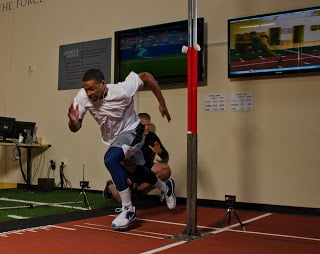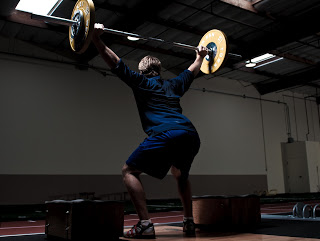
The earliest recorded sport and event was a single sprinting event. This race was held in 776 BC in at the first Olympic Games in Olympia, a town nearby Sparta in ancient Greece. Other activities like jumping, throwing, and weightlifting were used to train and improve in this running race, but eventually became competitions in their own right. Even now, weightlifting and jumping (i.e. plyometrics) have remained major avenues to improve physical fitness and reduce injuries.
Borrowing from academia, the term periodization was used to describe the planning of this training. So Russian scientists in the 1950s began charting athletes’ progression towards the Olympics by prescribing weights based off amount lifted in a 1 repetition maximum (1 RM). With exceptional prowess in weightlifting as a sport, this system worked very well for the Soviet Union. However, times have changed; particularly because democracy has prevented complete control of an athlete’s life, and the rise of professional sports’ long, lucrative seasons have minimized the benefit of this 1 RM testing and changed the training structure of athletes permanently.

The first problem with the 1 RM is that it is no longer performed similar to the aforementioned Russians, where the goal was to simply get the weight above your head, such as the snatch and clean & jerk. Now the 1 RM is most used in squat and bench, which introduces a huge amount of subjectivity. You might have squatted to a lower depth than your teammate, but it is hard to prove it.
The second problem with maximal strength testing is specificity. While squat strength has been shown to be correlated with athletic ability, it does not come close to a more dynamic movement like the vertical jump. Yes, you can certainly perform both, but every minute you use on testing, you lose on actually working on qualities that must be improved.
The last major aspect that minimizes the need for maximal testing is injury. Athletes are competitive, they will usually do whatever it takes to complete the set or move a weight, especially in a test setting where energy is high from encouraging coaches and teammates. Luckily, body weight is not affected by this emotional state. If the athlete is unmotivated, then you have an even bigger problem, as the person has lost the connection between the training environment and his/her sport.
There is an answer to this problem, base your training and progressions off body weight. Your lifts would be based off percentage of body weight, a measurement of relative strength. This relative strength is applicable to any sport, whether you have to run and propel your body in a certain direction or generate enough momentum to stop an oncoming object. Then progress your athletes to more challenging movements (less reps/more weight, front squat to back squat, etc.) based off achievements of those percentages. We have spent a decade establishing the perfect percentages for each exercise based off body weight, such as our front squat protocols.
The second solution to 1 RM involves testing; your best test is of course your sport. After that, vertical jump has the most widespread correlation to athletic ability. We use a force plate analysis to be more specific in analyzing this test.
Athletes and coaches often throw around statements of how much weight they can lift. However, because this performance is subjective, non-sport specific and injury prone, the only benefit of the comment is the acknowledgement of their work ethic.
But if you’re competing against our athletes, just stick with tomorrow’s 70% 1 RM squat workout, these numbers are always included in your game’s stat lines and we got an entire day of training in on your testing day.